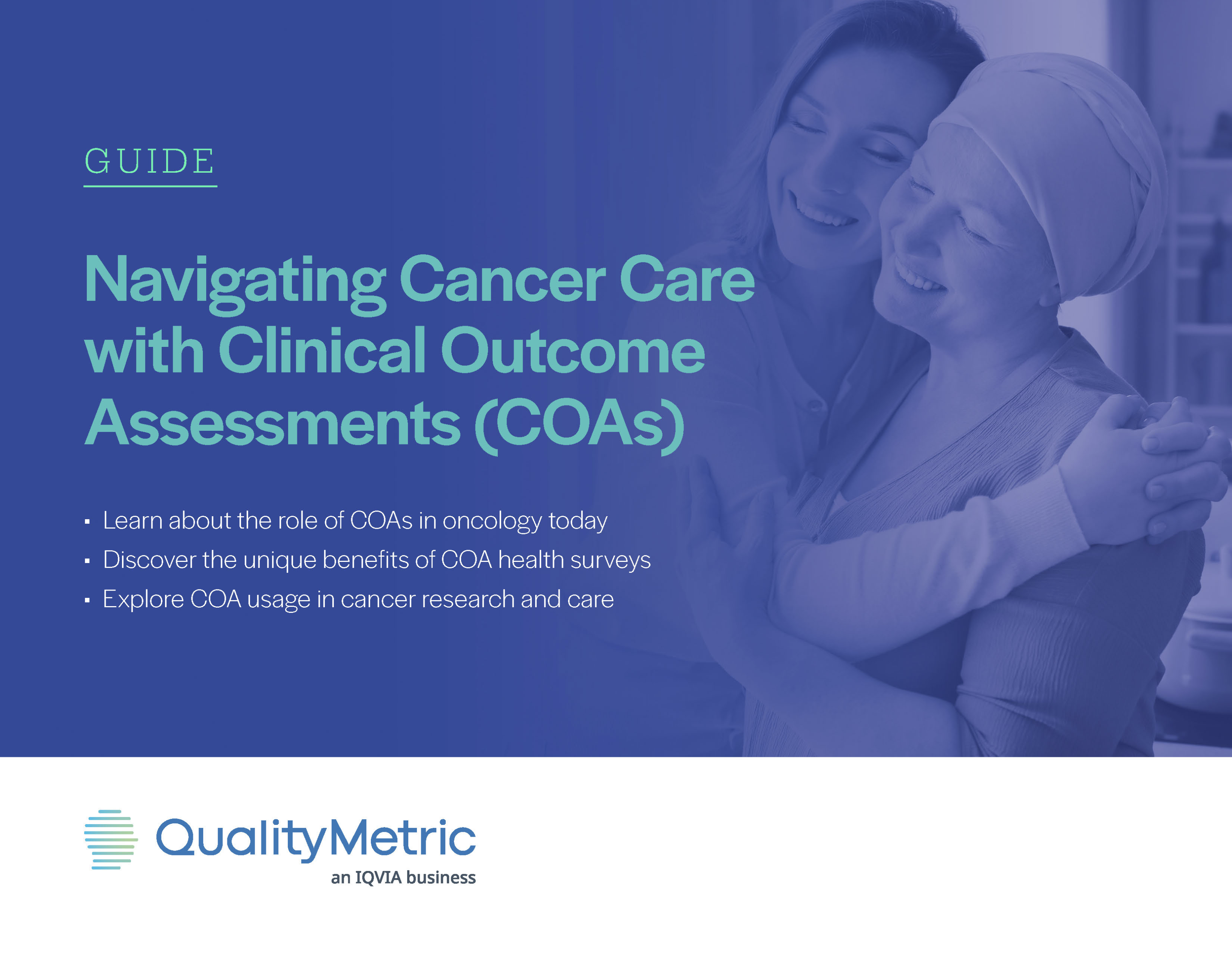
What’s Trending in PROs: Reference Values
Patient-reported outcomes (PROs) are increasingly valued in clinical trial research and treatment delivery as a reliable method of determining a patient’s current mental, emotional, or physical state relative to a variety of diseases and conditions. With health status reports coming directly from the patient rather than outsider interpretations from tests or observations, PROs offer researchers and care teams invaluable data for guiding healthcare initiatives.
Chief Scientific Officer of QualityMetric Jakob Bjørner, MD, PhD, has contributed to the discourse on their usage in clinical care settings with the publication of a Medical Care article on one of the most interesting trends in the PRO space. “Applying PRO Reference Values to Communicate Clinically Relevant Information at the Point-of-care” discusses the missed opportunity of reporting reference values for common PRO measures to provide context for an individual patient’s scores and support more informed clinical care.
Authors Bjørner and Roxanne Jensen, PhD, state that the inclusion of reference values requires “an understanding of the clinical purpose, the availability of an appropriate reference value, and graphical representation.” Strong methodological expertise will be needed to properly set and apply PRO reference values, but the longstanding discipline behind reference value development and use in psychology and medicine is an indicator that similar PRO applications may be feasible and beneficial in clinical encounters for both providers and patients.
The Role of Reference Values
Reference values, an important tool in clinical settings, use the average of repeated measurements to provide an expected value for a score on any medical test. Most clinicians are familiar with the presence and analysis of reference values that often accompany laboratory test results.
As with measuring the height and weight percentiles of children compared to their peers, PRO reference values could highlight significantly different patient information that healthcare professionals may find out of range, concerning, and worthy of further exploration.
By putting patient-reported outcome results into context through reference values, clinicians will be equipped to effectively draw and understand comparisons, offer better care, and adjust treatments and therapies as needed for optimal results.
The Future of PRO Score Interpretation

In their deep dive on this trend, Bjørner and team argue that healthcare providers and patients should be able to examine and compare test results in all avenues of medicine. PRO reference values have the potential to alter the course of patient care and adapt to suit different patient populations and specific healthcare situations.
The methodological approaches they share may help fellow thought leaders experiment more with obtaining PRO reference samples, calculating reference intervals, and presenting values for future clinical care applications.
Read the full article to discover their suggested methods, review reference value terminology adapted for patient-reported outcomes, and illuminate key differences between reference value use in PRO score interpretation versus other types of clinical chemistry measures.
Follow QualityMetric to keep up with trends in patient-reported outcomes and
contact us for more information regarding the value of PROs and other COA solutions.
Chief Scientific Officer of QualityMetric Jakob Bjørner, MD, PhD, has contributed to the discourse on their usage in clinical care settings with the publication of a Medical Care article on one of the most interesting trends in the PRO space.¹
References
- Jensen RE, Bjorner JB. Applying PRO Reference Values to Communicate Clinically Relevant Information at the Point‑of‑Care. Med Care. 2019;57(Suppl 1):S24–S30. https://journals.lww.com/lww-medicalcare/abstract/2019/05001/applying_pro_reference_values_to_communicate.6.aspx
 NEW COAS IN ONCOLOGY GUIDE
NEW COAS IN ONCOLOGY GUIDE

